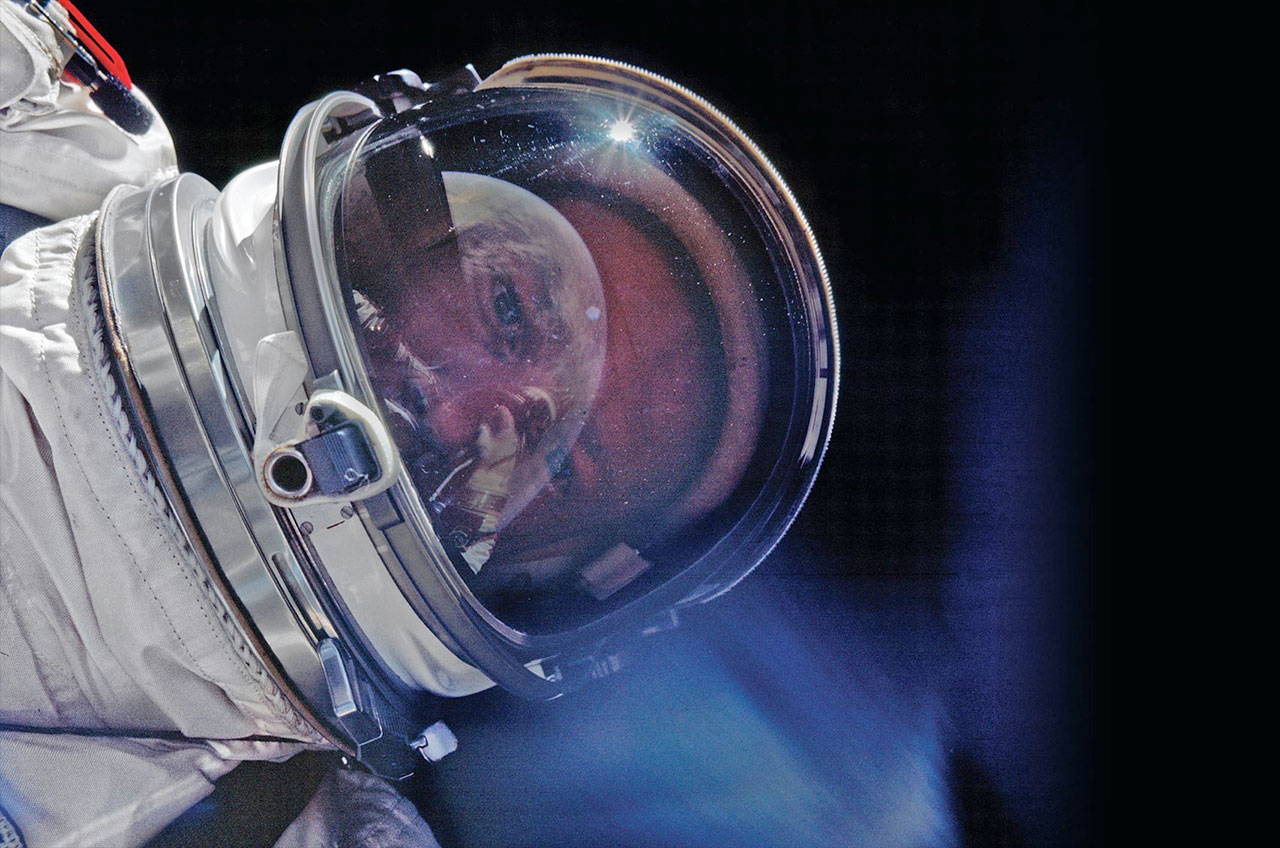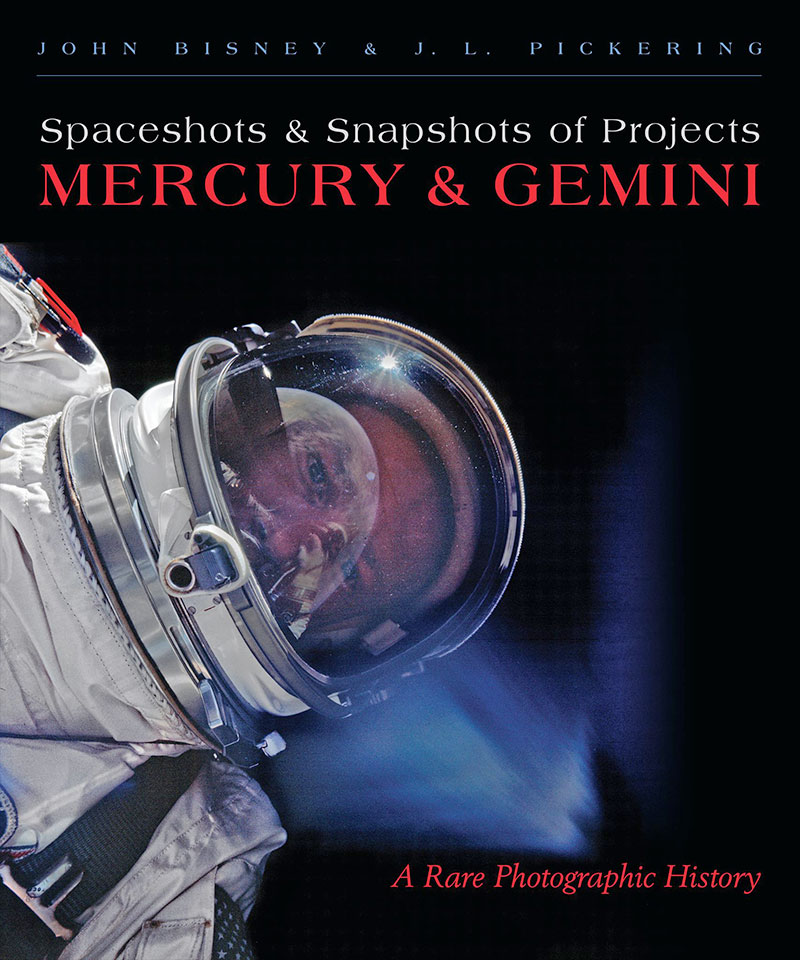New Photo Book Presents Rare 'Snapshots' from NASA's Early 'Spaceshots'

J.L. Pickering usually doesn't take kindly to books claiming "never before seen" NASA photographs.
A space historian and one half of the team behind the new title, "Spaceshots and Snapshots of Projects Mercury and Gemini: A Rare Photographic History," now available from University of New Mexico Press, he has almost assuredly already seen the photos. In fact, it's not uncommon to find him calling out the false descriptions.
"When we would go into any bookstore, we would naturally check out the space books," John Bisney, Pickering's co-author, said about the catalyst that led to their new book, which presents some of the truly seldom reproduced shots from NASA's first piloted space programs. "We'd pull them out, look through them, and it would always be like, 'Seen that, seen that, seen that.'" [Best Space Books and Sci-Fi: A Reading List]
Worse still, was when the not-so-never-before-seen photos were also misidentified.
"There was this problem of just seeing 'the greatest hits,' but then there was also sloppiness in terms of identifying what was what," Bisney explained. "And J.L. kept showing me all these amazing images out of his collection. 'Never seen that, never seen that, never seen that.'"
"So why don't we do a book of photos people haven't seen instead of a book of photographs people have seen?" he recalled asking.
And so that's what they did.
Breaking space news, the latest updates on rocket launches, skywatching events and more!
The first of two volumes — the second, which is due out in September, will cover the Apollo moon landing program — "Spaceshots and Snapshots" captures the one and two man Mercury and Gemini flights using photos culled from the literally hundred of thousands of images Pickering has collected over the course of decades from veterans of the U.S. space program.
"At one point, I was hauling back two, three, four hundred, five hundred photos each trip," Pickering described. "And then it just kind of dawned on us at some point, maybe we can figure out a way to put all this stuff together."
The "way" was the 224-page "Spaceshots and Snapshots" with its almost 700 images of astronauts, space capsules, rockets and launch pads.
"It could have been much bigger," Pickering noted. "We started out with 60 to 75 pictures per mission. But we tried not to duplicate the same sort of event too often."
"If it was only up to me, there would be a night shot of the vehicle on the launch pad in every chapter, but John was the person of reason on that," he said.
Bisney, a former correspondent who covered the space program for more than 30 years for CNN, the Discovery Channel and SiriusXM Radio, organized the photos that he and Pickering selected for inclusion in the book and wrote their captions. [Project Mercury: Photos of NASA's 1st Manned Spaceship]
"When this first started out, it was just a photo book," said Pickering. "So what I would do, after we picked the photos we were using, I would give John the basic information, like the date that I had, anything about it that I would know about that photo."
"And we started out with these brief captions. But all of a sudden, it became these mega-captions, and that is what made the book, I think," he said.
The extended photo descriptions grew out of two factors. First, Bisney had never written captions for a book before, but even more than that, the more he stared at the photos, the more he wanted to know more about them.
"The more I looked at the pictures, the more I thought, 'What is that thing? Who is that person? What is going on there?" Bisney recalled. "And the more I would look at the pictures and blow them up sometimes, there were just so many tidbits you could talk about."
And that, in turn, led to Pickering and him learning even more about the history of Mercury and Gemini than they knew going into the project.
"We learned a lot of stuff doing this," Pickering noted. "I'm sure that just about anybody [reading the book] is going to learn some stuff."
And among that was what makes for a rare space photo.
"Most of these are NASA shots," Pickering said, 'but there are a handful of shots in this book that are not NASA, and it is all still pretty stellar stuff."
"Yeah, it says 'rare' on the cover and there are some rare photographs, but it is hard to get into those first few years without including some images that people have seen," he concluded. "But there is a lot of them you have not seen before."
Click through to collectSPACE to view sample pages from "Spaceshots and Snapshots."
Follow collectSPACE.com on Facebook and on Twitter at @collectSPACE. Copyright 2015 collectSPACE.com. All rights reserved.

Robert Pearlman is a space historian, journalist and the founder and editor of collectSPACE.com, a daily news publication and community devoted to space history with a particular focus on how and where space exploration intersects with pop culture. Pearlman is also a contributing writer for Space.com and co-author of "Space Stations: The Art, Science, and Reality of Working in Space” published by Smithsonian Books in 2018.
In 2009, he was inducted into the U.S. Space Camp Hall of Fame in Huntsville, Alabama. In 2021, he was honored by the American Astronautical Society with the Ordway Award for Sustained Excellence in Spaceflight History. In 2023, the National Space Club Florida Committee recognized Pearlman with the Kolcum News and Communications Award for excellence in telling the space story along the Space Coast and throughout the world.


